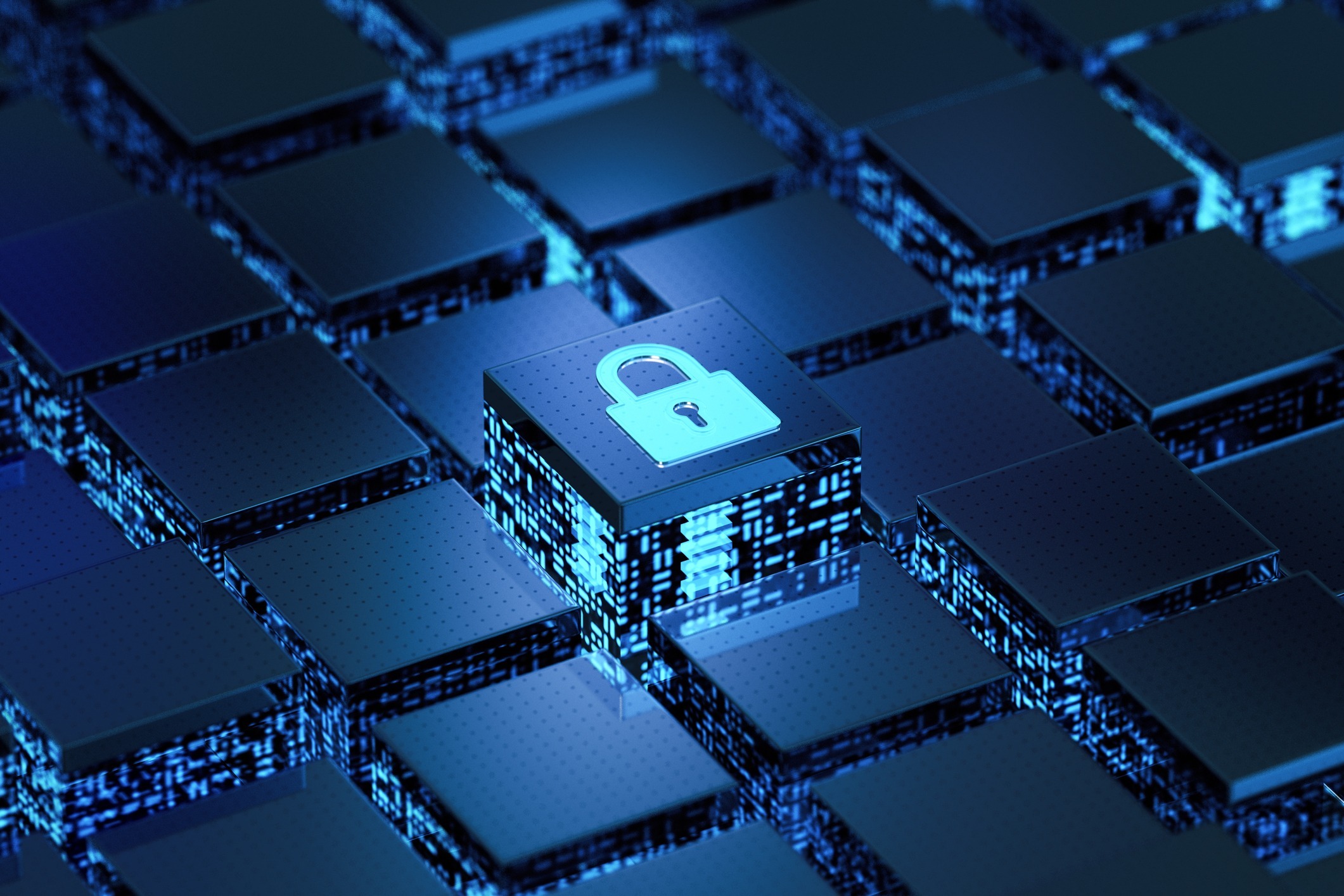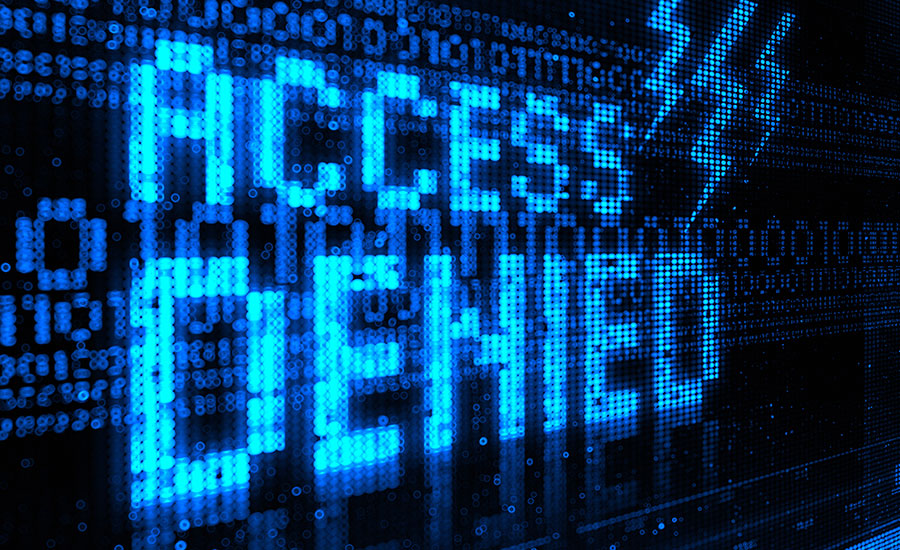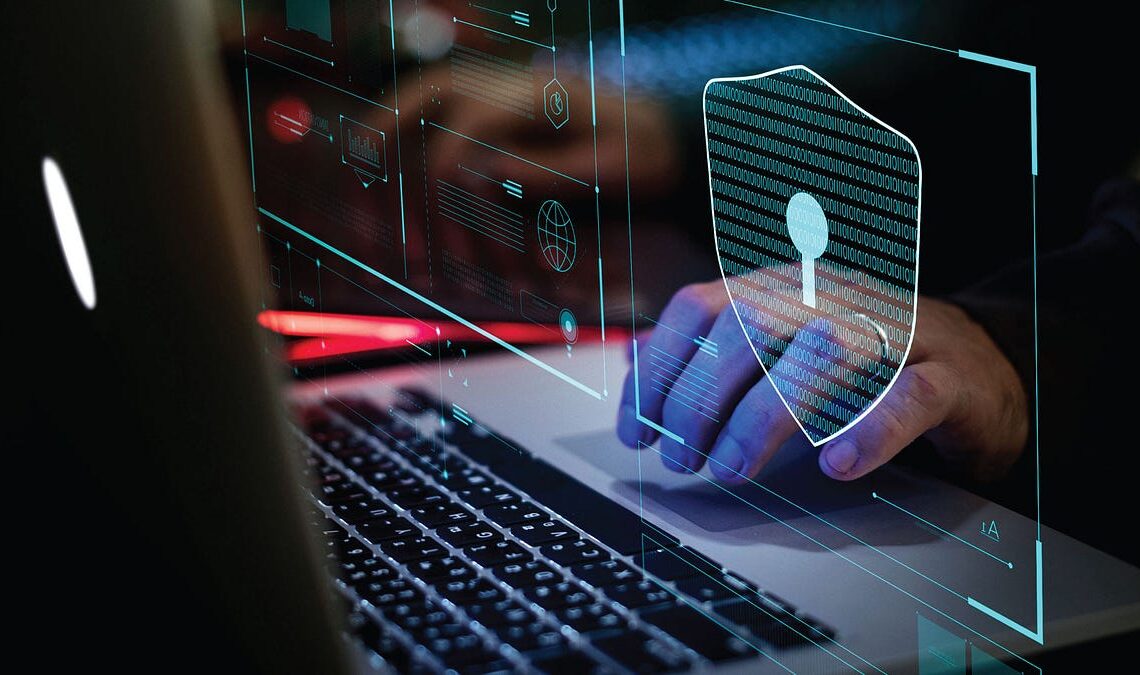In today’s hyper-connected digital world, the sophistication and frequency of cyber threats continue to escalate at an alarming rate. From ransomware attacks crippling critical infrastructure to sophisticated phishing campaigns targeting sensitive personal and business data, the digital landscape has become a battleground where malicious actors constantly seek to exploit vulnerabilities. In response to this ever-evolving threat environment, the field of cybersecurity has witnessed significant advancements in defensive technologies, particularly in the realm of cyber threat detectors. These advanced systems go beyond traditional signature-based antivirus solutions, leveraging cutting-edge techniques like artificial intelligence (AI), machine learning (ML), behavioral analysis, and threat intelligence to proactively identify and neutralize malicious activities in real-time.
The progress in cyber threat detectors is crucial for protecting individuals, businesses of all sizes, and critical infrastructure from increasingly sophisticated attacks. This article will delve into the pressing need for advanced cyber threat detection, explore the key advancements in these technologies, detail the various types of advanced detectors and their functionalities, discuss the significant benefits they offer, address the inherent challenges in their deployment and maintenance, and project the future trajectory of cyber threat detection in the ongoing battle against cybercrime.
The Pressing Need for Advanced Cyber Threat Detection
The increasing complexity and impact of cyber threats underscore the urgent requirement for more sophisticated detection capabilities.
- Escalating Sophistication of Attacks: Cybercriminals are employing increasingly advanced techniques, including polymorphic malware, zero-day exploits, and sophisticated social engineering tactics that can evade traditional security measures. Advanced threat detectors are designed to identify these novel and evasive threats.
- Growing Frequency and Volume of Attacks: The sheer number of cyber attacks launched daily continues to rise, overwhelming traditional security systems and increasing the likelihood of successful breaches if more advanced detection mechanisms are not in place.
- Expanding Attack Surface: With the proliferation of cloud services, IoT devices, and remote work environments (a trend also relevant for businesses in Yogyakarta adapting to modern work styles), the potential entry points for cyberattacks have expanded dramatically, necessitating broader and more intelligent detection coverage.
- High Cost of Successful Breaches: The financial, reputational, and operational consequences of a successful cyber attack can be devastating for organizations of any size. Advanced threat detectors play a crucial role in minimizing the likelihood and impact of such incidents.
- Targeting of Critical Infrastructure: Nation-state actors and sophisticated cybercriminal groups are increasingly targeting critical infrastructure (e.g., energy, healthcare, transportation), posing significant risks to public safety and national security. Advanced detection is vital for protecting these essential systems.
- Evolving Regulatory Landscape: Data breach notification laws and cybersecurity regulations are becoming more stringent worldwide, including potential future regulations that might impact organizations in Indonesia. Advanced detection capabilities help organizations comply with these evolving requirements.
- Insider Threats: A significant portion of data breaches and security incidents originate from within an organization. Advanced threat detectors that incorporate user behavior analytics can help identify and mitigate insider threats, whether malicious or accidental.
- The Need for Proactive Defense: Traditional security often relies on reacting to known threats. Advanced threat detection aims to be proactive, identifying suspicious activities and potential attacks before they can cause significant damage.
Key Advancements in Cyber Threat Detection Technologies

The field of cyber threat detection is constantly evolving, driven by innovation in several key technological areas.
- Artificial Intelligence (AI) and Machine Learning (ML): AI and ML algorithms can analyze vast amounts of data to identify patterns and anomalies that may indicate malicious activity, including previously unknown threats. ML models can learn and adapt to new attack vectors over time, improving detection accuracy and reducing false positives.
- Behavioral Analytics (User and Entity Behavior Analytics – UEBA): UEBA systems establish a baseline of normal behavior for users, devices, and applications within a network. Deviations from this baseline can signal compromised accounts, insider threats, or other malicious activities that might not trigger traditional signature-based alerts.
- Threat Intelligence Platforms (TIPs): TIPs aggregate and analyze threat data from various sources (e.g., security vendors, open-source intelligence, government agencies), providing valuable context and indicators of compromise (IOCs) that advanced detectors can use to identify and respond to known and emerging threats. Sharing of threat intelligence is becoming increasingly important for collective defense, even for organizations in regions like Yogyakarta.
- Network Traffic Analysis (NTA): NTA solutions monitor network traffic in real-time, looking for suspicious patterns, anomalies, and policy violations. Advanced NTA can analyze encrypted traffic and identify sophisticated network-based attacks that bypass traditional perimeter security.
- Endpoint Detection and Response (EDR): EDR systems provide comprehensive visibility into endpoint activity (e.g., desktops, laptops, servers), recording events and behaviors that can be analyzed to detect and respond to threats that bypass traditional endpoint security. Advanced EDR often incorporates AI, behavioral analysis, and threat intelligence.
- Security Orchestration, Automation, and Response (SOAR): While not directly a detection technology, SOAR platforms integrate with various security tools, including advanced threat detectors, to automate incident response workflows, speeding up containment and remediation efforts once a threat is detected.
- Cloud Security Analytics: With the increasing adoption of cloud services, specialized security analytics tools are emerging to monitor cloud environments for threats, misconfigurations, and compliance violations, providing visibility into cloud-specific attack vectors.
- Deception Technology (Cyber Deception): This involves creating realistic decoys and traps within a network to lure attackers, allowing security teams to detect their presence, study their tactics, and gather valuable intelligence without risking genuine assets.
Types of Advanced Cyber Threat Detectors and Their Functionalities
A variety of advanced cyber threat detectors are available, each with specific functionalities tailored to different aspects of the threat landscape.
- Intrusion Detection and Prevention Systems (IDPS) – Next Generation (NGIDPS): Building upon traditional IDPS, NGIDPS incorporate deeper packet inspection, application awareness, and often integrate with threat intelligence feeds to detect more sophisticated network-based attacks. Some NGIDPS also include behavioral analysis capabilities.
- Security Information and Event Management (SIEM) Systems with Advanced Analytics: Modern SIEM platforms go beyond basic log aggregation and correlation, incorporating AI and ML to analyze security events from across the IT infrastructure, identify complex threat patterns, and provide actionable alerts.
- Endpoint Detection and Response (EDR) Platforms: As mentioned earlier, EDR agents on endpoints continuously monitor activity, record telemetry data, and provide analysis capabilities for threat hunting, investigation, and automated or manual response actions.
- Network Detection and Response (NDR) Solutions: These focus on analyzing network traffic to detect suspicious behavior, anomalies, and potential attacks that may not be visible at the endpoint level. NDR often uses AI and ML to identify sophisticated threats within network flows.
- Cloud Workload Protection Platforms (CWPPs): Designed specifically for cloud environments, CWPPs provide threat detection and protection for workloads (e.g., containers, serverless functions, virtual machines) running in the cloud, addressing cloud-native security challenges.
- Threat Intelligence Platforms (TIPs) – Integrated Detection Capabilities: Some TIPs offer direct integration with security tools or include their own detection rules and correlation engines, allowing organizations to proactively hunt for threats based on the latest intelligence.
- Security Analytics Platforms with UEBA: These platforms focus on analyzing user and entity behavior patterns to detect anomalous activities that could indicate compromised accounts, insider threats, or sophisticated attacks that blend in with normal traffic.
- Deception Platforms: These systems deploy decoys and breadcrumbs across a network to attract attackers, triggering alerts when interaction occurs and providing insights into attacker tactics and techniques.
Significant Benefits Offered by Advanced Cyber Threat Detectors
The deployment of advanced cyber threat detectors provides numerous advantages in strengthening an organization’s security posture.
- Improved Detection of Sophisticated Threats: Advanced techniques like AI, ML, and behavioral analysis enable the detection of novel, evasive, and zero-day attacks that traditional signature-based systems would miss.
- Reduced False Positives: By leveraging contextual information, behavioral baselines, and threat intelligence, advanced detectors can significantly reduce the number of false positive alerts, allowing security teams to focus on genuine threats.
- Enhanced Visibility into the Attack Lifecycle: EDR and NDR solutions provide deeper visibility into what is happening on endpoints and across the network, enabling security teams to understand the full scope of an attack and respond more effectively.
- Faster Incident Response: Automated analysis, prioritized alerts, and integration with SOAR platforms allow for quicker identification, containment, and remediation of security incidents, minimizing potential damage.
- Proactive Threat Hunting Capabilities: Advanced detectors often provide tools and data that enable security analysts to proactively hunt for hidden threats within the network based on threat intelligence and behavioral anomalies.
- Better Understanding of Attack Tactics and Techniques: By analyzing the behavior of detected threats, organizations can gain valuable insights into the tactics, techniques, and procedures (TTPs) used by attackers, improving their overall security posture.
- Improved Insider Threat Detection: UEBA capabilities within advanced detectors provide the ability to identify and alert on anomalous user behavior that could indicate insider threats, whether malicious or unintentional.
- Enhanced Security Posture and Resilience: By providing more comprehensive and accurate threat detection, these advanced systems contribute to a stronger overall security posture and increased resilience against cyber attacks.
Inherent Challenges in Deployment and Maintenance
Despite their benefits, deploying and maintaining advanced cyber threat detectors can present several challenges for organizations.
- Complexity of Implementation and Configuration: Advanced detectors often require careful planning, configuration, and integration with existing security infrastructure, which can be complex and resource-intensive.
- High Data Volumes and Processing Requirements: Analyzing vast amounts of data for behavioral anomalies and threat patterns requires significant processing power and storage capacity.
- Need for Skilled Security Personnel: Effectively operating, interpreting the output of, and responding to alerts from advanced threat detectors requires highly skilled security analysts and incident responders, a talent pool that is often scarce.
- Potential for False Negatives: While advanced systems aim to reduce false positives, they are not foolproof and can still miss sophisticated attacks (false negatives), especially those that are novel or highly targeted.
- Cost of Acquisition and Maintenance: The licensing fees, hardware requirements, and ongoing maintenance costs for advanced cyber threat detection platforms can be substantial, especially for smaller organizations in regions like Yogyakarta.
- Integration Challenges with Legacy Systems: Organizations with significant investments in legacy security infrastructure may face challenges in seamlessly integrating advanced detectors with their existing tools.
- Keeping Pace with Evolving Threats: The cyber threat landscape is constantly changing, requiring continuous updates, tuning, and retraining of AI/ML models to maintain detection effectiveness.
- Privacy Concerns with Data Collection: Some advanced detection techniques, particularly UEBA, involve collecting and analyzing detailed user activity data, raising potential privacy concerns that need to be addressed through appropriate policies and anonymization techniques.
- Alert Fatigue Despite Reduced False Positives: Even with fewer false positives, the sheer volume of alerts from various advanced detectors can still lead to alert fatigue if not properly managed and prioritized.
- Understanding and Trusting AI/ML-Driven Decisions: Interpreting the reasoning behind AI/ML-driven threat detections can sometimes be challenging, potentially leading to a lack of trust in the system’s conclusions.
The Future Trajectory of Cyber Threat Detection

The future of cyber threat detection is likely to be shaped by several key trends and advancements.
- Increased Reliance on AI and ML: AI and ML will become even more deeply integrated into all aspects of cyber threat detection, driving more accurate, adaptive, and autonomous security systems.
- Greater Emphasis on Behavioral and Anomaly Detection: As attackers become more adept at evading signature-based detection, behavioral analytics and anomaly detection will become increasingly critical for identifying sophisticated threats.
- Convergence of Security Tools and Platforms: The trend towards consolidation in the cybersecurity vendor landscape will likely lead to more integrated platforms that combine various detection and response capabilities.
- Enhanced Threat Intelligence Sharing and Collaboration: Information sharing about emerging threats and attack indicators will become more widespread and automated, strengthening collective defense efforts globally, including for organizations in Indonesia.
- Rise of XDR (Extended Detection and Response): XDR will expand beyond endpoints to integrate telemetry from networks, cloud environments, and other security layers, providing a more holistic view of the threat landscape and enabling more coordinated response actions.
- Focus on Proactive Threat Hunting: Organizations will increasingly invest in proactive threat hunting capabilities, leveraging advanced detection tools and skilled analysts to uncover hidden threats before they can cause harm.
- Integration of Deception Technologies as a Standard Practice: Cyber deception will likely become a more mainstream security strategy for early threat detection and intelligence gathering.
- Security Automation and Orchestration (SOAR) as a Core Component: SOAR platforms will play an increasingly vital role in automating incident response workflows triggered by advanced threat detectors, improving efficiency and reducing response times.
- Democratization of Advanced Threat Detection for Smaller Businesses: Cloud-based and managed security service providers (MSSPs) will likely offer more accessible and affordable advanced threat detection capabilities for smaller organizations. This could be particularly beneficial for SMEs in regions like Yogyakarta.
- Continuous Threat Exposure Management (CTEM): A more proactive and continuous approach to identifying, evaluating, and mitigating cyber risks will drive the evolution of threat detection strategies and tools.
Conclusion
The ongoing battle against cyber threats demands continuous innovation and advancement in defensive technologies. Advanced cyber threat detectors, leveraging the power of AI, ML, behavioral analytics, and threat intelligence, represent a significant leap forward in our ability to proactively identify and neutralize sophisticated attacks. While challenges in deployment, cost, and expertise remain, the benefits of enhanced detection accuracy, reduced false positives, and faster incident response are crucial for fortifying digital defenses in an increasingly hostile cyber landscape.
As the threat landscape continues to evolve, so too must our detection capabilities, with the future promising even more intelligent, integrated, and automated solutions. For individuals, businesses, and critical infrastructure worldwide, staying ahead in this cyber arms race through the adoption and effective use of advanced cyber threat detectors is not just a matter of security, but a necessity for maintaining our increasingly digital way of life.














